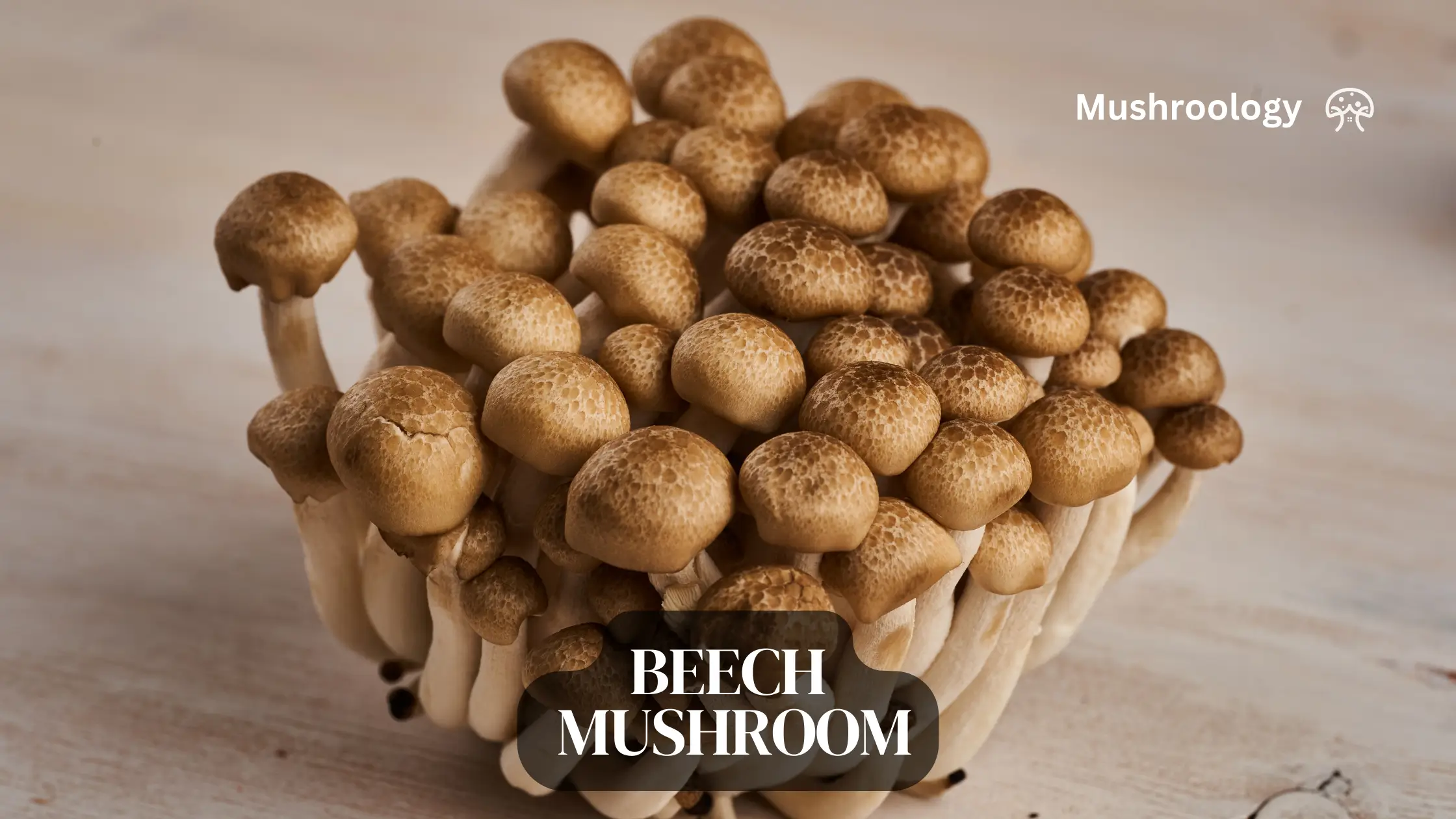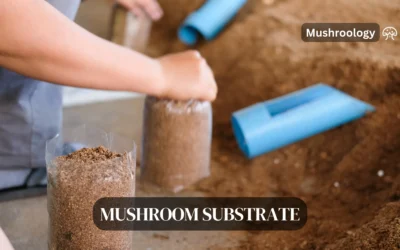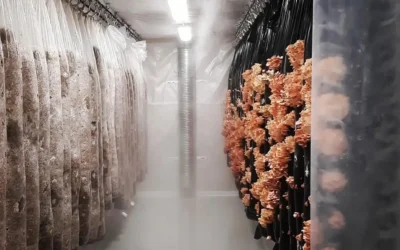Brown beech mushrooms, scientifically known as Hypsizygus tessulatus, are a type of edible mushroom native to East Asia. They are also commonly referred to as Buna-shimeji or brown clamshell mushrooms. These mushrooms are known for their small, brown caps and creamy white stems, and they grow in clusters on hardwood trees, particularly beech trees, which is how they got their name.
Brown Beech Mushrooms (Buna-shimeji)
Brown beech mushrooms, also known as Buna-shimeji, are characterized by their brown caps and long, slender stems. They grow in clusters, often referred to as “bouquets.” These mushrooms have a slightly nutty flavor that intensifies when cooked, offering a tender texture that complements a variety of dishes.
White Beech Mushrooms (Bunapi-shimeji)
White beech mushrooms, or Bunapi-shimeji, are a mutation of the brown beech mushrooms and are not commonly found in the wild. They are cultivated for their uniform white color and delicate flavor. Like their brown counterparts, they grow in clusters and have a firm texture that holds up well in cooking.
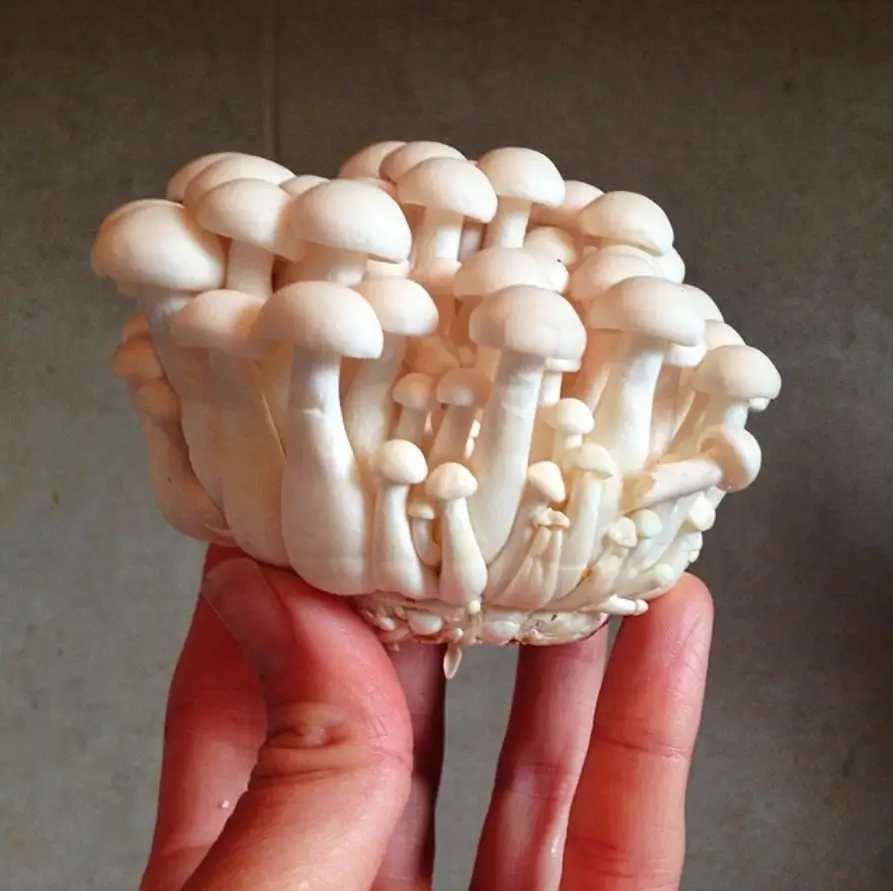
Beech mushroom growth habitat
Beech mushrooms are commonly found growing on decaying beech trees, which is where they get their name. They thrive in cool, damp environments, making them suitable for cultivation in controlled settings.
Key takeaways
- Identify the right substrate is critical for successful beech mushroom cultivation.
- Create a breathable environment with a quarter-inch hole in jar lids can lead to an ideal cultivation set-up.
- Sterilization of jars at specific temperatures and pressures is a non-negotiable step in the growing process.
- Indoor beech mushroom cultivation offers a rewarding and flavorful harvest accessible from the comfort of your home.
- Adequate preparation and a clear guide can simplify the beech mushroom growing at-home experience for enthusiasts.
“Mycelium is the dark matter of the soil: unseen and often ignored, yet vital to the cycle of life and growth.”
Let’s delve deeper and juxtapose the different approaches within beech mushroom farming techniques. Below is a compiled breakdown of various substrates and their corresponding benefits:
| Substrate | Benefits | Notes |
|---|---|---|
| Hardwood Sawdust | Mimics natural habitat leads to robust mycelial networks | Widely available and cost-effective |
| Supplemented Substrates (e.g., soy hulls) | Enriches nutrition, increases yield | It may require additional preparation |
| Logs | Long-term cultivation, gradual mushroom growth | Suitable for outdoor setups |
Beech Mushroom Growing Guide
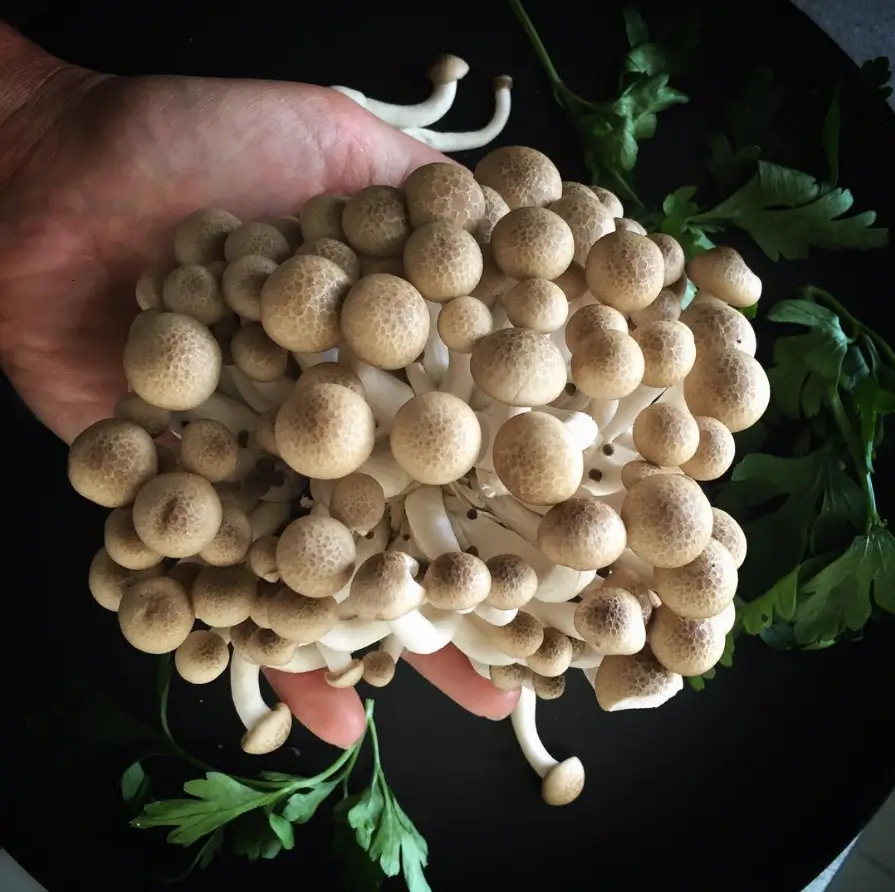
The mushroom grower’s toolkit
Here’s a list of items you’ll want to gather before you begin:
- Substrate materials (we’ll discuss this in detail later)
- Sterilization equipment (pressure cooker or large pot)
- Grow bags or containers
- Beech mushroom spawn
- Thermometer and hygrometer
- Spray bottle for misting
- Clean workspace and gloves
Remember, cleanliness is key when it comes to mushroom cultivation. You’ll want to make sure all your equipment is properly sanitized to prevent contamination. Trust me, your future mushrooms will thank you!
Choose the right substrate for Beech Mushrooms
One of the most crucial aspects of growing beech mushrooms is selecting and preparing the right substrate. The substrate is essentially the food source for your mushrooms, providing them with the nutrients they need to grow and thrive.
Ideal substrate for beech mushrooms
For beech mushrooms, a hardwood-based substrate works best. Here’s a popular mix that many growers swear by:
• 50% hardwood sawdust (beech or oak works well)
• 30% wheat bran
• 20% wood chips
• Water (to achieve proper moisture content)
The key is to create a substrate that’s nutrient-rich but also allows for proper air exchange. It’s like creating the perfect mushroom buffet!
Preparing rour substrate for beech mushrooms
Now that you’ve got your ingredients, it’s time to prep your substrate. This process might seem a bit intimidating at first, but don’t worry – we’ll break it down into easy-to-follow steps.
- Mix your dry ingredients thoroughly.
- Gradually add water until the mixture holds its shape when squeezed (but isn’t dripping).
- Fill your grow bags or containers with the substrate mixture.
- Sterilize the filled bags in a pressure cooker or large pot for about 2-3 hours.
- Allow the sterilized substrate to cool completely before inoculation.
Remember, patience is a virtue in mushroom cultivation. Taking the time to properly prepare and sterilize your substrate will pay off in healthier, more abundant mushrooms down the line.
Inoculation: Introduce Beech Mushroom Spawn
Excited? You should be! We’re about to bring your substrate to life with beech mushroom spawn. This is where the magic really begins.
Choose quality spawn
First things first – make sure you’re starting with high-quality beech mushroom spawn. Look for reputable suppliers who specialize in mushroom cultivation. Good spawn is the foundation of a successful grow, so it’s worth investing in quality.
The inoculation irocess
- In a clean, still-air environment, open your sterilized substrate bag.
- Carefully add your beech mushroom spawn to the substrate.
- Mix thoroughly to distribute the spawn evenly.
- Seal the bag, leaving a small opening for air exchange.
Think of this process as planting seeds in a garden. You’re setting the stage for your mushrooms to colonize and flourish!
Create the Perfect Growing Environment for Beech Mushrooms
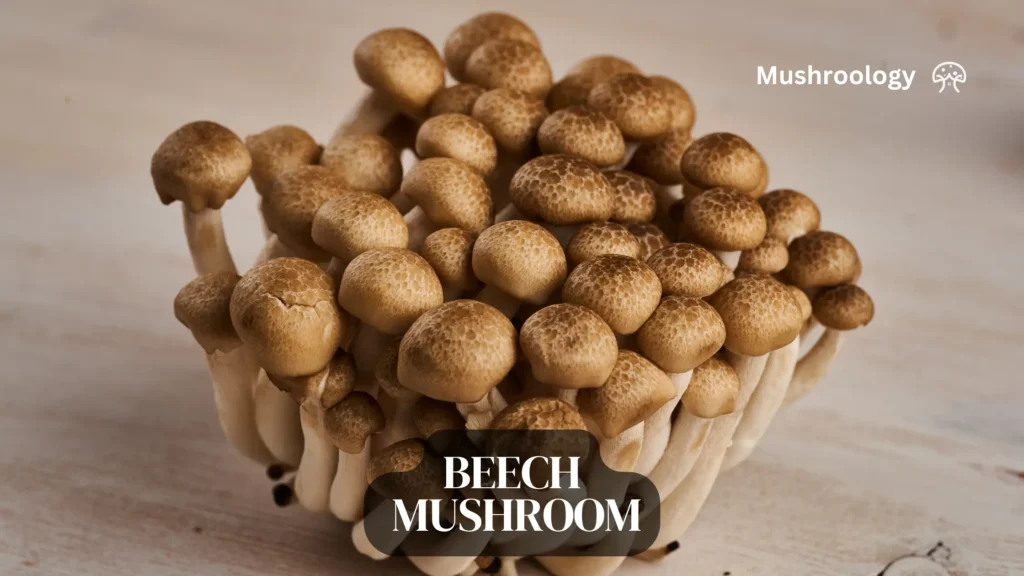
Alright, green thumbs (or should I say, fungal fingers?), it’s time to create the ideal home for your beech mushrooms. These little guys can be a bit particular about their living conditions, but don’t worry – with a few simple tricks, you’ll have them feeling right at home in no time.
Temperature and Humidity
Beech mushrooms thrive in specific temperature and humidity ranges. Here’s what you need to aim for:
• Temperature: 60-70°F (15-21°C) • Humidity: 80-90%
Maintaining these conditions is crucial for healthy mycelium growth and fruiting. Consider using a thermometer and hygrometer to monitor these factors closely. You might even want to create a mini greenhouse effect by covering your grow bags with a clear plastic tent – just be sure to allow for some air circulation!
Lighting Conditions
While beech mushrooms don’t need light for photosynthesis (they’re fungi, after all!), they do benefit from some indirect light during their fruiting stage. A few hours of soft, ambient light each day can help guide their growth and improve their color.
Monitoring mycelium growth
Now comes the part that tests every mushroom grower’s patience – waiting for the mycelium to colonize the substrate. But don’t worry, this is where things get really interesting!
Signs of Healthy Colonization
As your beech mushroom mycelium grows, you’ll start to see white, thread-like structures spreading through the substrate. This is a good sign! Here’s what to look out for:
• Even, white growth throughout the substrate
• A slightly sweet, mushroomy smell
• No signs of contamination (unusual colors or odors)
Remember, good things come to those who wait. Colonization can take anywhere from 2-4 weeks, depending on conditions. Use this time to learn more about mushroom cultivation – you’re on your way to becoming a fungi expert!
Fruiting: Help Your Beech Mushrooms to Grow
Congratulations! If you’ve made it this far, your patience is about to pay off. Once your substrate is fully colonized, it’s time to initiate fruiting. This is where you’ll start to see those clusters of beech mushrooms forming – exciting, right?
Initiate the Fruiting Process
To encourage your beech mushrooms to fruit:
- Introduce fresh air by opening the grow bag or moving to a fruiting chamber.
- Lower the temperature slightly (55-65°F or 13-18°C).
- Increase humidity to 90-95% by misting regularly.
- Provide indirect light for 6-8 hours a day.
Think of this as creating autumn-like conditions – it’s when beech mushrooms naturally fruit in the wild. You’re essentially tricking them into thinking it’s the perfect time to produce mushrooms!
Harvest Your Beech Mushrooms: Timing is Everything
The moment you’ve been waiting for is almost here – harvest time! But hold your horses, eager mushroom farmer. Knowing when and how to harvest is crucial for getting the best out of your beech mushrooms.
When to Harvest
Beech mushrooms are ready to harvest when:
• The caps are fully formed but not yet flattened
• The clusters are tight and compact
• They’re about 1-2 inches in height
Pro tip: It’s better to harvest a bit early than too late. Overripe mushrooms can become tough and lose flavor.
Harvesting Techniques
To harvest your beech mushrooms:
- Gently grasp the base of the cluster.
- Twist and pull the entire cluster from the substrate.
- Avoid leaving stumps, as these can be sites for contamination.
Remember, a clean harvest sets the stage for future flushes. Your substrate can produce multiple harvests, so treat it with care!
Enjoy the Fruits of Your Labor!
You’ve done it! You’ve successfully grown your own beech mushrooms. Now comes the most rewarding part – enjoying your harvest. Beech mushrooms have a delightful texture and a mild, nutty flavor that shines in a variety of dishes.
Common mistakes and how to avoid them when growing beech mushrooms
Poor Sterilization Techniques
Mistake: Not properly sterilizing the substrate can lead to contamination. Solution: Always sterilize the substrate thoroughly using a pressure cooker or autoclave.
Inadequate Air Circulation
Mistake: Poor air circulation can lead to contamination and poor mycelium growth. Solution: Ensure adequate air circulation by using fans or placing the containers in a well-ventilated area.
Incorrect Temperature and Humidity
Mistake: Not maintaining the correct temperature and humidity levels can hinder mushroom growth. Solution: Use a thermometer and hygrometer to monitor and maintain the ideal conditions.
Impatience
Mistake: Rushing the process can lead to poor results. Solution: Be patient and allow the mycelium to fully colonize the substrate before inducing fruiting.
Pro Tips for Growing Beech Mushrooms
- Use High-Quality Spawn: Purchase spawn from a reputable supplier to ensure high success rates.
- Monitor Conditions Regularly: Regularly check and adjust the temperature, humidity, and air circulation.
- Experiment with Substrates: Try different substrate combinations to see what works best for your setup.
- Keep a Growing Journal: Document your growing process to track what works and what doesn’t.
Why Grow Beech Mushrooms?
Growing beech mushrooms at home offers a multitude of benefits that span freshness, cost-effectiveness, health advantages, and sustainability. Here’s a comprehensive look at why you should consider cultivating these nutritious fungi:
Freshness
One of the most compelling reasons to grow beech mushrooms at home is the unparalleled freshness you can achieve. When you cultivate your own mushrooms, you can harvest them at their peak, ensuring the best flavor and texture. Freshly harvested beech mushrooms have a nutty, slightly sweet taste and a firm, crunchy texture that can elevate any dish. This freshness is often lost in store-bought mushrooms, which may have been harvested days or even weeks before reaching your kitchen.
Cost-Effective
Growing beech mushrooms at home can be a cost-effective alternative to purchasing them from specialty stores or markets. While the initial investment in growing kits or supplies might seem significant, the long-term savings are substantial. A single grow kit can yield multiple harvests, providing a steady supply of mushrooms at a fraction of the cost of buying them regularly. Additionally, by growing your own, you avoid the markup prices often associated with gourmet mushrooms.
Health Benefits
Beech mushrooms are a nutritional powerhouse, offering a range of health benefits:
- Rich in Vitamins and Minerals: Beech mushrooms are an excellent source of vitamins B and D, which are crucial for maintaining healthy bones, teeth, and immune function. They also contain significant amounts of copper, selenium, and potassium, which support various bodily functions, including red blood cell formation, thyroid health, and blood pressure regulation.
- High in Antioxidants: These mushrooms are packed with antioxidants that help protect the body from oxidative stress, reducing the risk of chronic diseases such as cancer and heart disease. Antioxidants neutralize free radicals, preventing cell damage and inflammation.
- Immune System Boost: Beech mushrooms have been used in traditional Chinese medicine for their immune-boosting properties. They can stimulate the production of white blood cells, enhancing the body’s natural defenses against infections and diseases.
- Low in Calories and Fat: Beech mushrooms are low in calories and fat, making them an excellent addition to a healthy diet. They are also high in dietary fiber, which aids in digestion and helps maintain a healthy weight.
Sustainability
Growing your own beech mushrooms is an environmentally friendly practice that contributes to sustainability in several ways:
- Reduced Carbon Footprint: By cultivating mushrooms at home, you eliminate the need for transportation and packaging, significantly reducing your carbon footprint. Commercially grown mushrooms often travel long distances before reaching consumers, contributing to greenhouse gas emissions.
- Organic and Chemical-Free: Home cultivation allows you to control the growing conditions, ensuring that no harmful pesticides or synthetic fertilizers are used. This not only benefits your health but also protects the environment from chemical contamination.
- Waste Reduction: Growing your own food encourages the use of imperfect produce that might otherwise be discarded. This practice reduces food waste and promotes a more sustainable food system.
- Biodiversity and Soil Health: Home gardening practices such as composting and crop rotation enhance soil health and promote biodiversity. These practices create a balanced ecosystem that supports beneficial insects and wildlife, contributing to a healthier environment.
FAQ
What exactly are beech mushrooms?
Beech mushrooms, or Hypsizygus tessulatus, are edible fungi with a small brown cap and a creamy white stem. They’re known for their rich, buttery flavour and can be a delicious addition to many recipes. They’re also packed with nutrients and have been recognized for their potential medicinal benefits.
Can I grow beech mushrooms at home?
Absolutely! You can grow beech mushrooms indoors with the right setup. You’ll need a suitable substrate, which could be hardwood sawdust or a combination of sawdust and soy hulls, proper environmental conditions such as temperature, humidity, and ventilation, and, of course, beech mushroom spawn for inoculation.
What kind of substrate is best for growing beech mushrooms?
Beech mushrooms thrive on a substrate made from hardwood sawdust, but for an even better yield, you can add soy hulls, which provide additional nutrients. Ensure the substrate is finely ground for the best results in the cultivation process.
What are the optimal conditions for mycelium colonization?
The ideal temperature for mycelium growth is between 50-60 degrees Fahrenheit with a humidity level of 80-90%. Make sure your growing area is dark and provides ample room temperature for the best colonization.
What is the inoculation technique for beech mushrooms?
Inoculation involves adding grain spawn to your substrate. This should be done under sterile conditions to avoid contamination. After adding the spawn, it’s crucial to maintain the temperature and humidity levels to encourage the growth of the mycelium.
How do I create the ideal indoor farming environment?
To create the ideal environment for growing beech mushrooms, you need to control the temperature, usually between 14.5 to 16 degrees Celsius, and maintain high humidity levels around 96-98%. Additionally, you’ll want to ensure proper ventilation to manage carbon dioxide levels and provide low-level lighting to stimulate growth.
How do I know when it’s time to harvest my beech mushrooms?
Beech mushrooms are typically ready to harvest approximately 3-4 weeks after the initial fruiting begins. They should be plump, with caps fully developed but not fully unfolded. The exact timing can depend on your specific growing conditions, so keep an eye on them as they develop.
What maintenance is required during the beech mushroom growing process?
During the growth process, you’ll need to monitor temperature and humidity levels closely, adjust ventilation as necessary, and mist the mushrooms to maintain proper humidity if you’re in the fruiting phase. It’s essential to monitor for any signs of contamination and address them promptly.
Are there any common issues to watch out for when growing beech mushrooms?
Common issues include contamination by mold or bacteria, which can result from improper sterilization or environmental conditions. Fluctuating temperatures or incorrect humidity levels can also hinder the growth of your beech mushrooms. Maintaining a consistent environment is key to successful cultivation.
Can I grow beech mushrooms all year round?
Yes, you can grow beech mushrooms year-round if you provide them with the controlled environment they need. This makes indoor cultivation especially appealing since you’re not dependent on outdoor weather conditions.

